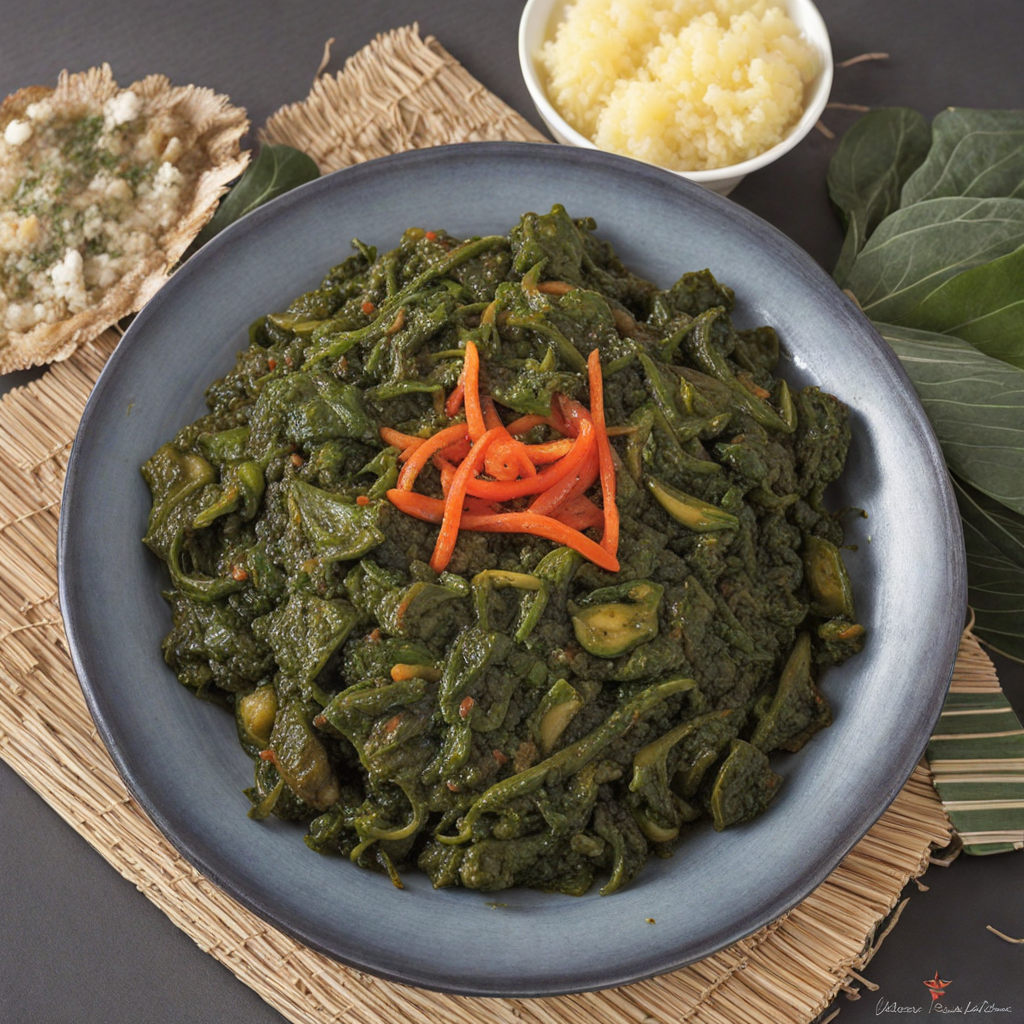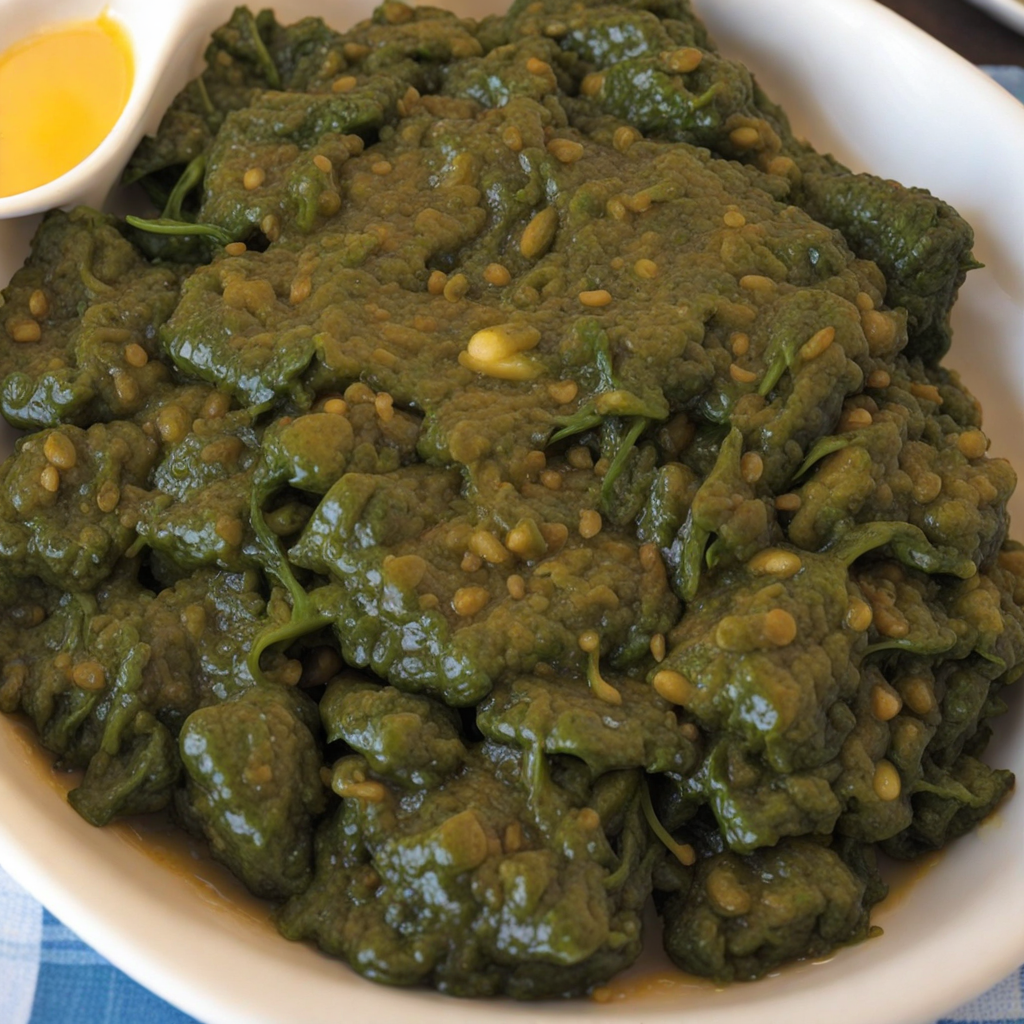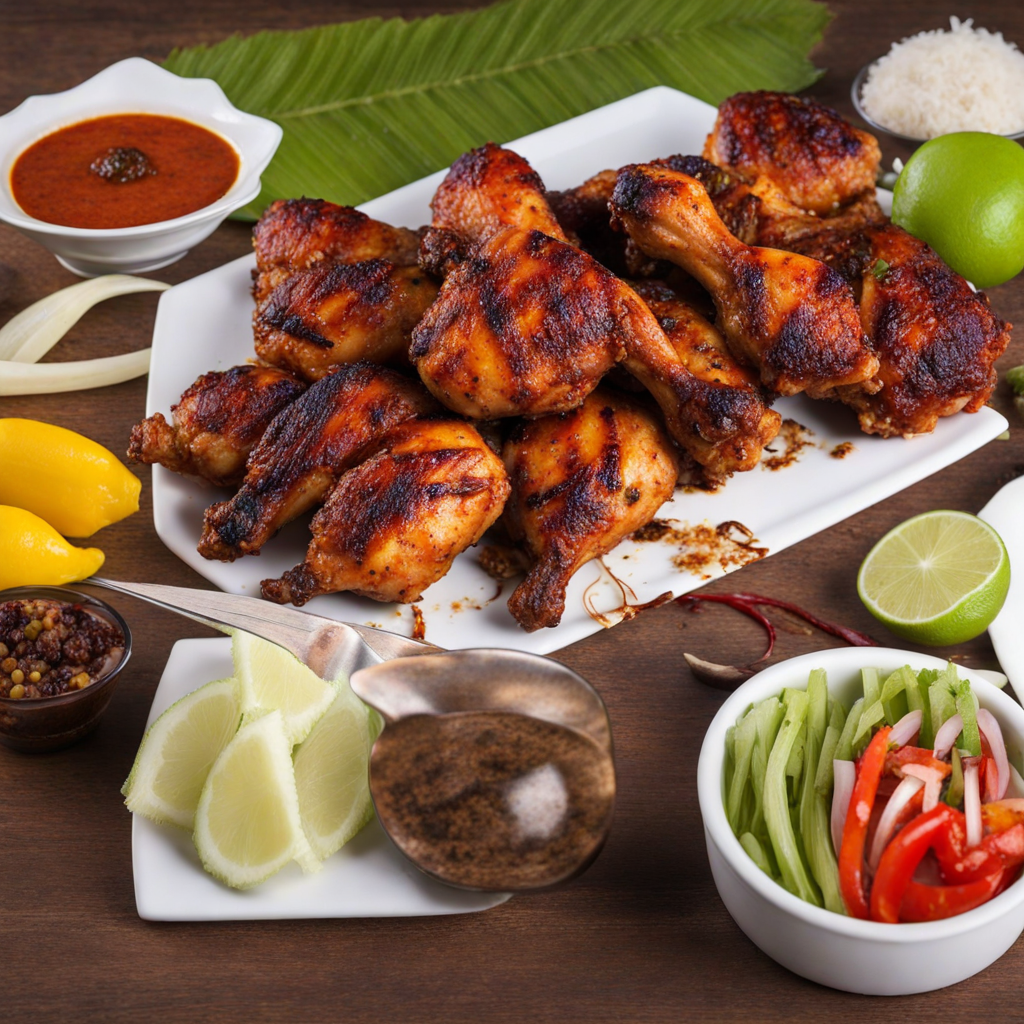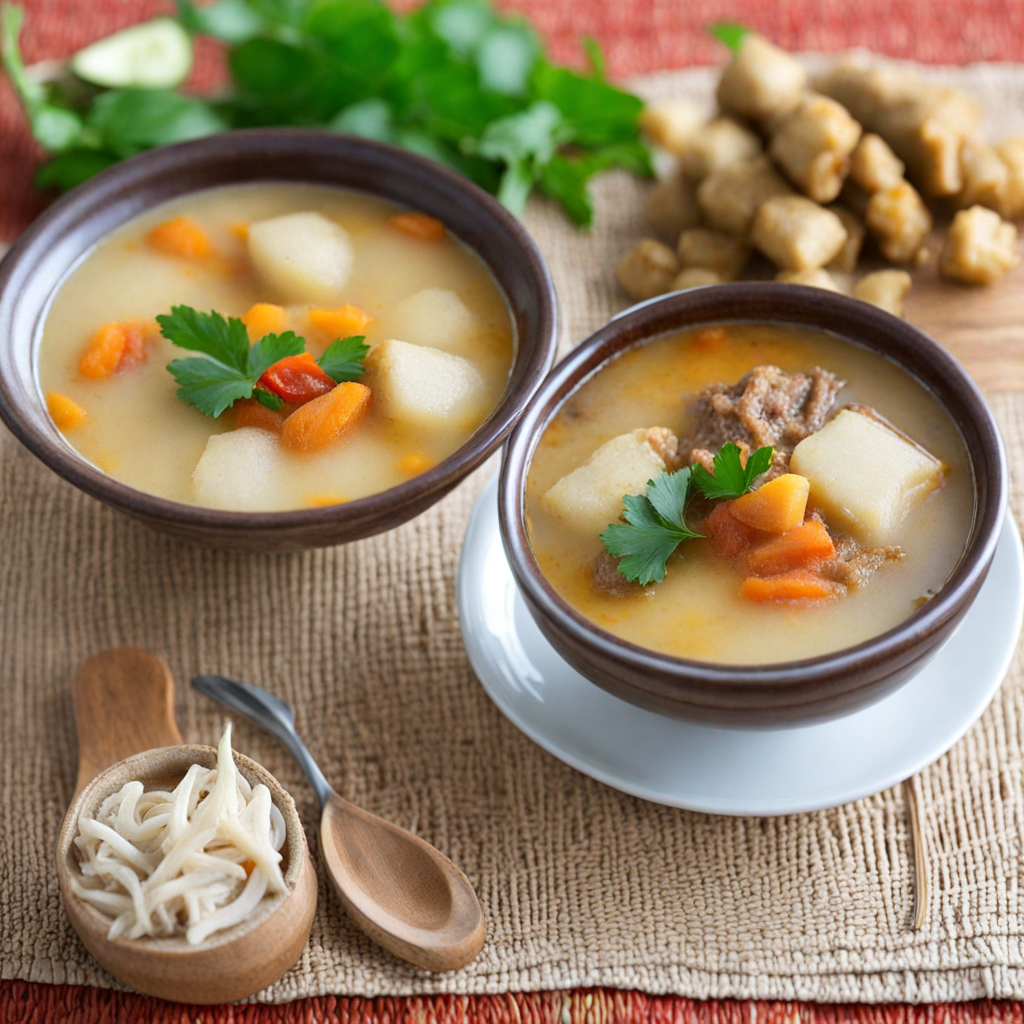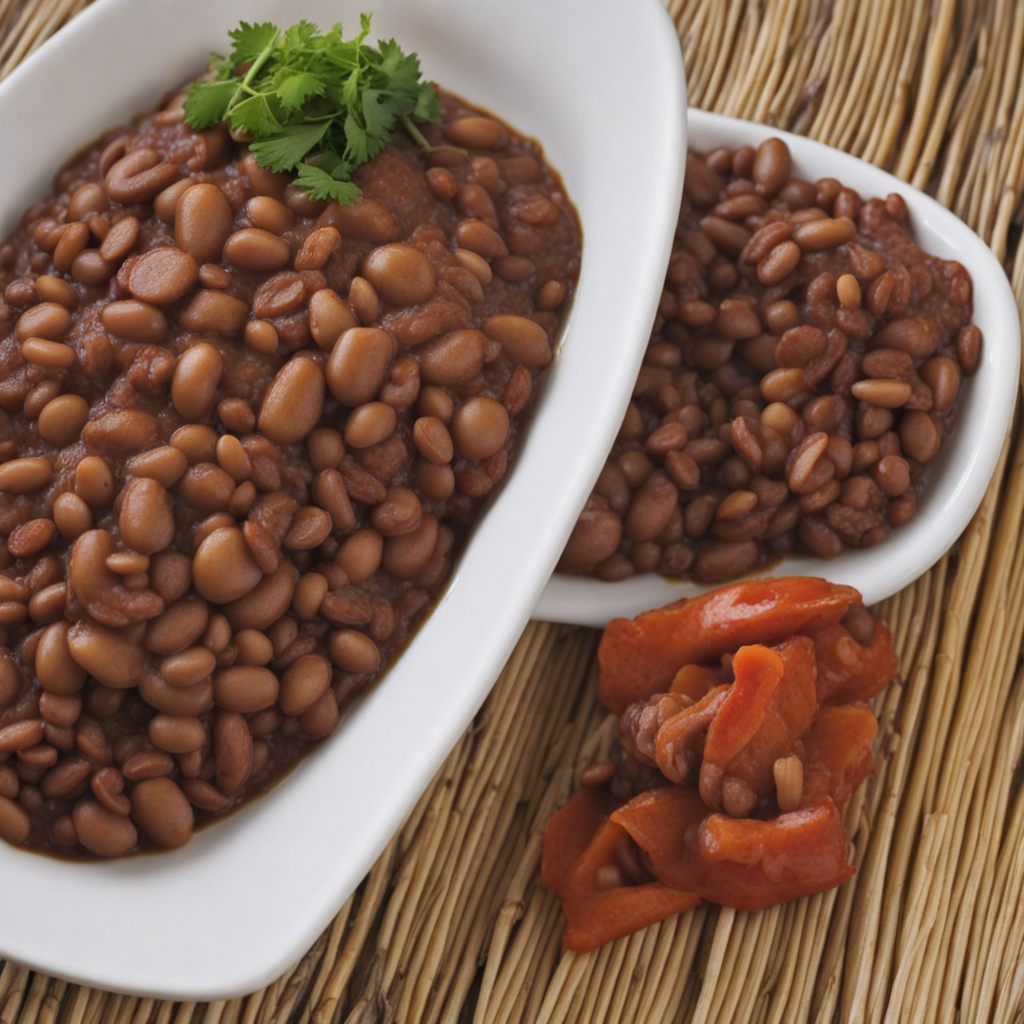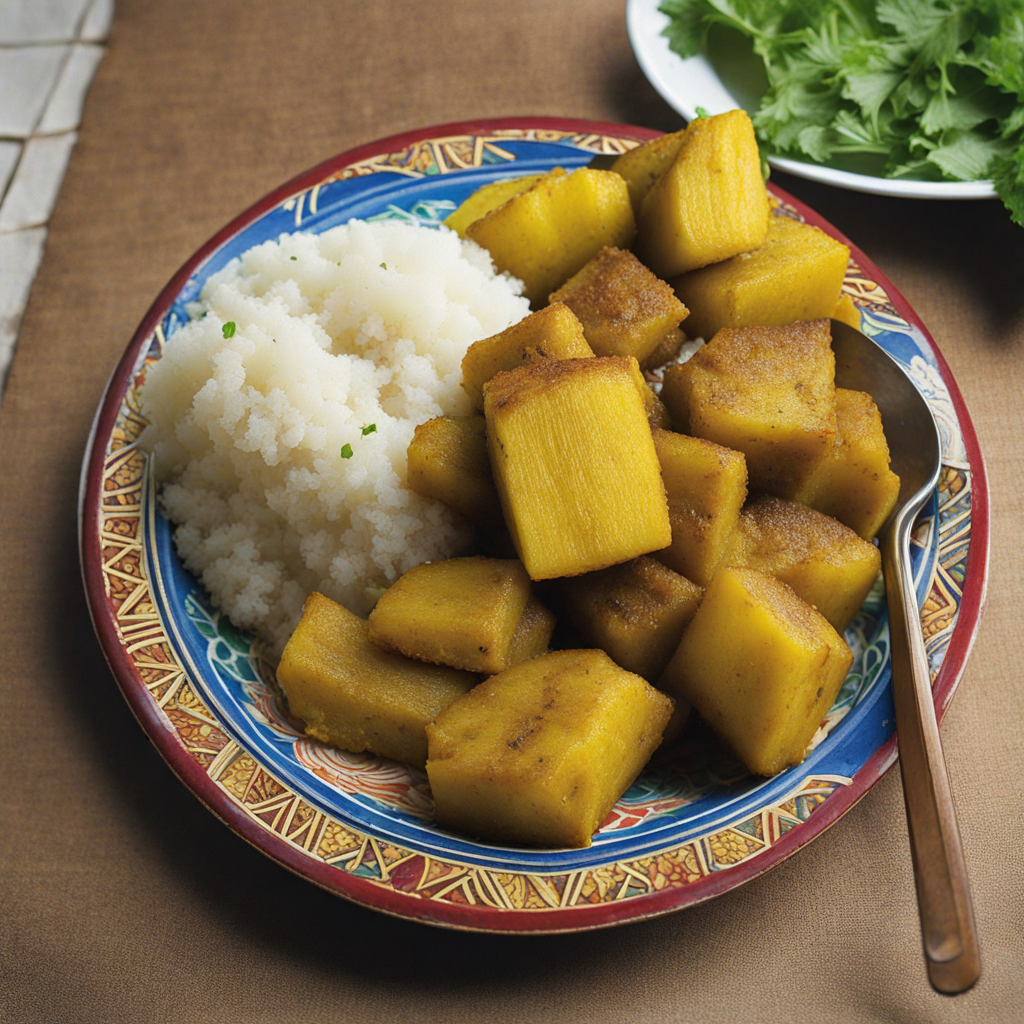Bitawiri
Bitawiri is a delightful Surinamese dish that encapsulates the rich culinary tapestry of this vibrant country. At its core, Bitawiri features a unique blend of starchy ingredients, predominantly cassava and plantains, which are skillfully mashed together to create a smooth, dough-like consistency. This base is then seasoned with a medley of spices that reflect the diverse cultural influences in Suriname, including hints of garlic, onion, and sometimes a touch of chili for an added kick. The dish is typically shaped into small patties or cakes and can be either pan-fried or baked, resulting in a golden, crispy exterior that beautifully contrasts with its soft, savory interior. What sets Bitawiri apart is its versatility, as it can be paired with a variety of accompaniments. Traditionally, it is served alongside rich, flavorful stews or grilled meats, which enhance its taste and provide a satisfying balance to the meal. The dish can also be enjoyed with fresh salsas or tangy sauces that brighten the palate. The combination of textures and flavors makes each bite an experience, where the earthiness of the cassava and plantains melds seamlessly with the savory elements of the accompanying dishes. As you embark on your culinary journey with Bitawiri, expect to be transported to the heart of Suriname. The dish not only offers a unique taste but also tells a story of cultural fusion, as it draws inspiration from Indigenous, African, Asian, and Dutch influences. Whether you enjoy it at a festive gathering or as a comforting home-cooked meal, Bitawiri promises to be an unforgettable addition to your food repertoire, inviting you to explore the delicious world of Surinamese cuisine.
How It Became This Dish
The History of Bitawiri: A Culinary Gem from Suriname Suriname, a small but culturally rich nation on the northeastern coast of South America, boasts a vibrant tapestry of ethnicities and traditions. Among its diverse culinary offerings, Bitawiri stands out as a beloved dish that encapsulates the nation’s rich history and cultural significance. This savory meat dish, typically made with a combination of chicken and spices, is not only a staple in Surinamese households but also a symbol of the blending of cultures that defines this unique nation. #### Origins of Bitawiri The story of Bitawiri begins with Suriname’s complex colonial history. Originally inhabited by Indigenous peoples, Suriname became a Dutch colony in the 17th century. The colonial era saw the arrival of African slaves, East Indian laborers, Chinese immigrants, and the Maroons—descendants of enslaved Africans who escaped plantations and established their own communities. This eclectic mix of cultures profoundly influenced Surinamese cuisine, paving the way for dishes like Bitawiri. The name "Bitawiri" is thought to derive from the Arawak language, spoken by some of the Indigenous populations in the region. The dish itself is characterized by its use of ingredients that were locally available, including various herbs and spices, coconut milk, and chicken, which became a common protein source. The traditional preparation involves marinating the chicken in a blend of spices, then cooking it slowly to allow the flavors to meld. The process reflects both the Indigenous practices and the culinary techniques brought by African and Indian influences. #### Cultural Significance Bitawiri is more than just a meal; it is a cultural emblem of togetherness and celebration in Suriname. Traditionally served during festive occasions, family gatherings, and community celebrations, Bitawiri embodies the spirit of sharing and hospitality that is central to Surinamese culture. It often accompanies rice or cassava, staples that further reinforce the dish's role in communal dining. In Suriname, food plays an essential role in cultural identity, and Bitawiri is a testament to this. The dish serves as a reminder of the country’s history, highlighting the resilience and adaptability of its people. The inclusion of various spices and cooking methods reflects the rich intercultural exchanges that have shaped Surinamese society. For example, the use of coconut milk is heavily influenced by the Indonesian and Indian communities, while the spices may hark back to African culinary traditions. #### The Development of Bitawiri Over Time As Suriname evolved, so too did Bitawiri. In the 20th century, with the advent of globalization, the dish began to integrate even more diverse influences. Increased immigration and tourism introduced new flavors and techniques, further enriching the culinary landscape of Suriname. Modern cooks began experimenting with variations of Bitawiri, incorporating ingredients such as bell peppers, tomatoes, and even different types of meat. The rise of urbanization in Suriname brought about changes in food production and consumption patterns. Traditional cooking methods, such as slow-cooking and the use of wood-fired ovens, started to compete with modern conveniences like gas stoves and microwaves. Yet, despite these changes, the essence of Bitawiri remained intact. It continues to be prepared with care and served with pride, preserving its status as a cherished dish in families across the nation. In recent years, a renewed interest in traditional and locally sourced foods has led to a revival of Bitawiri. Chefs and home cooks alike are returning to traditional recipes, emphasizing the importance of heritage and sustainability. This movement is also part of a broader trend in Suriname and around the world, where people are increasingly looking to reconnect with their roots and the origins of their culinary traditions. #### Bitawiri in Contemporary Suriname Today, Bitawiri is celebrated not only in homes but also in restaurants and food festivals throughout Suriname. Many chefs have taken the traditional recipe and given it a modern twist, offering new interpretations while honoring its origins. The dish has gained popularity among both locals and tourists, often featured prominently in culinary tours that showcase Suriname's rich gastronomic heritage. In addition, Bitawiri has found its way into the Surinamese diaspora, where it serves as a connection to home for those living abroad. Community gatherings in countries with significant Surinamese populations often feature Bitawiri as a centerpiece, allowing families to celebrate their heritage and share their culture with the next generation. #### Conclusion The history of Bitawiri is a fascinating reflection of Suriname’s cultural evolution, showcasing the rich tapestry of influences that have shaped the nation’s identity. From its Indigenous roots to the blending of African, Indian, and other culinary traditions, Bitawiri stands as a symbol of resilience, community, and the importance of food in cultural expression. As Suriname continues to navigate the complexities of modernity, Bitawiri remains a beloved dish that brings people together, bridging the past and the present. This culinary gem not only nourishes the body but also feeds the soul, reminding us of the shared histories and vibrant cultures that unite us all. Through each bite of Bitawiri, one can savor the flavors of Suriname’s rich heritage and the enduring spirit of its people.
You may like
Discover local flavors from Suriname


